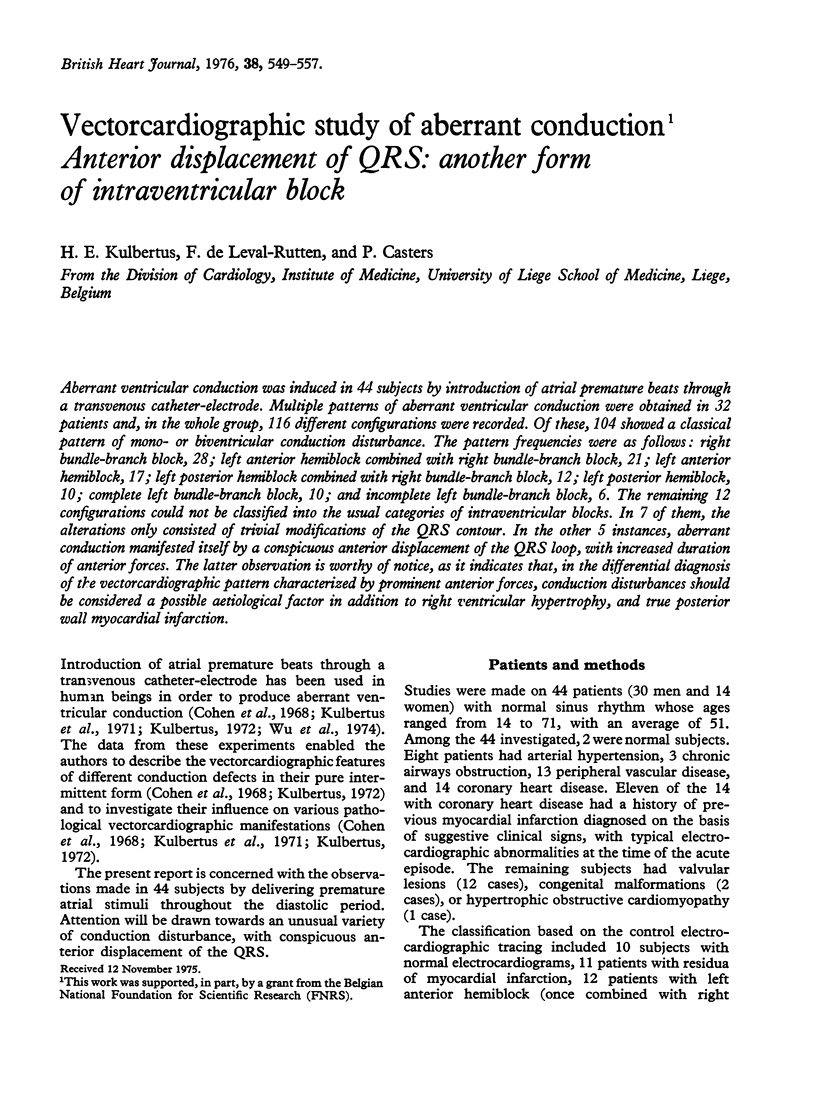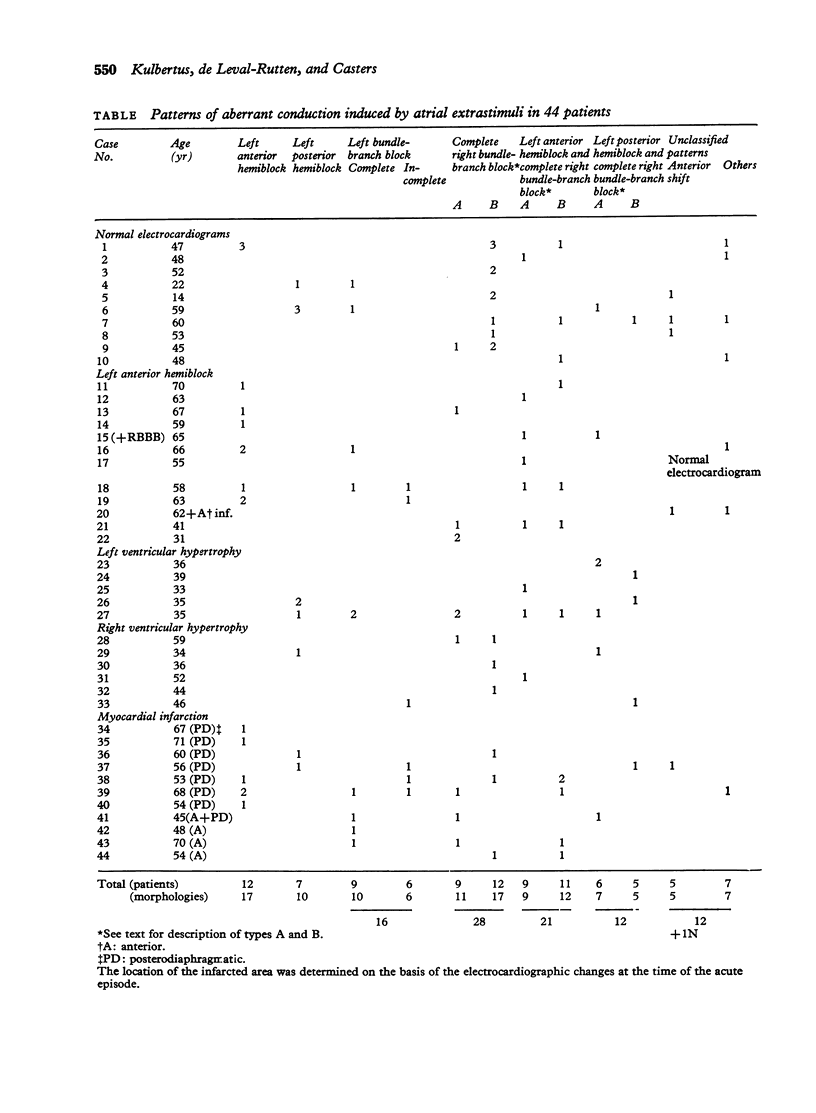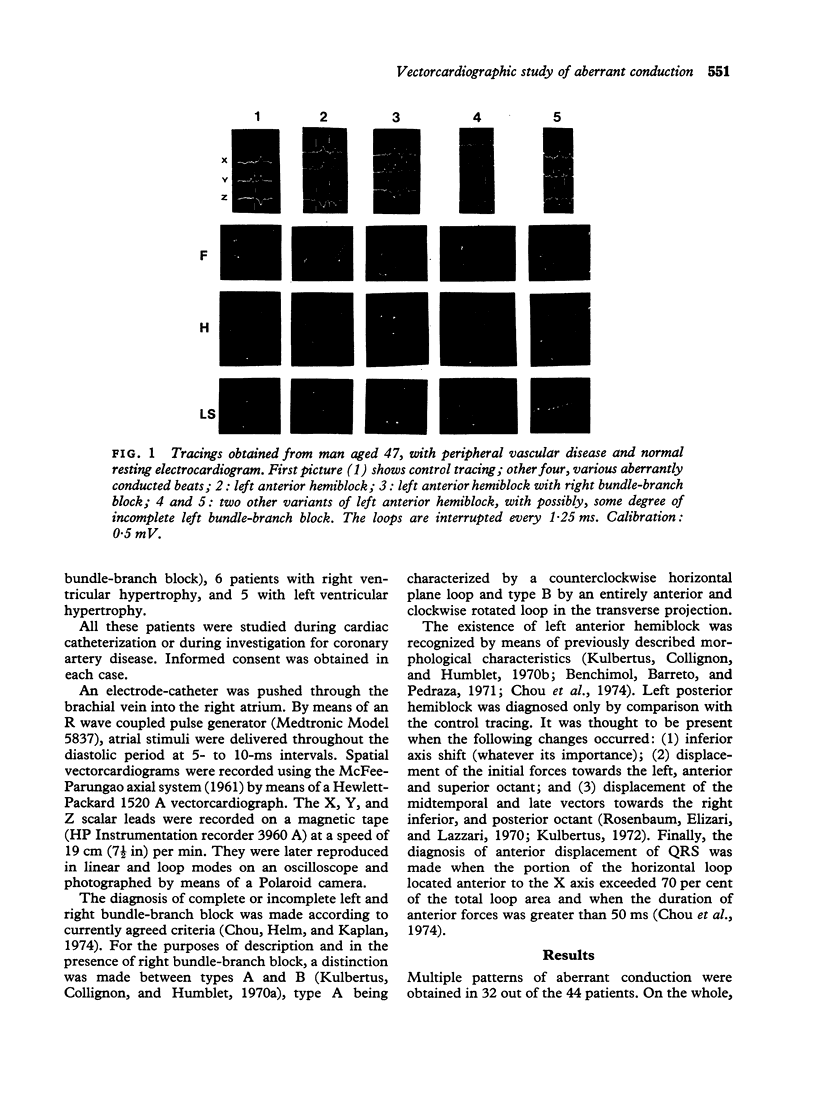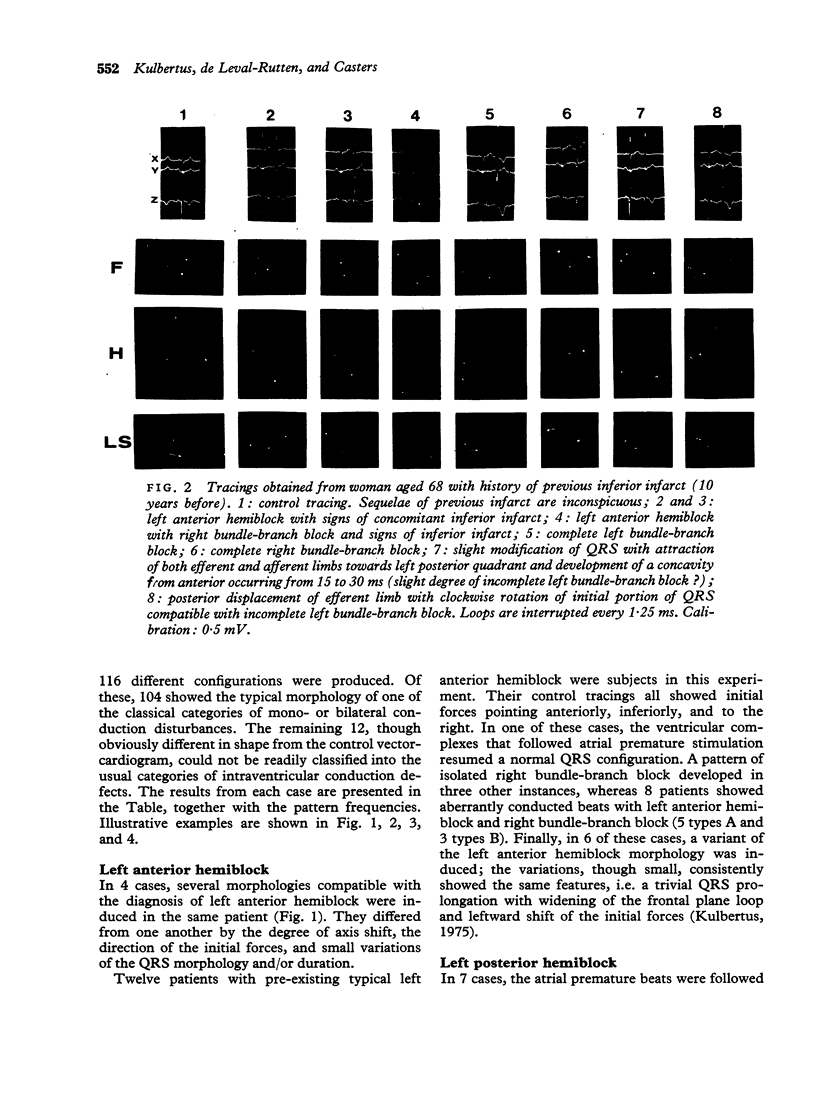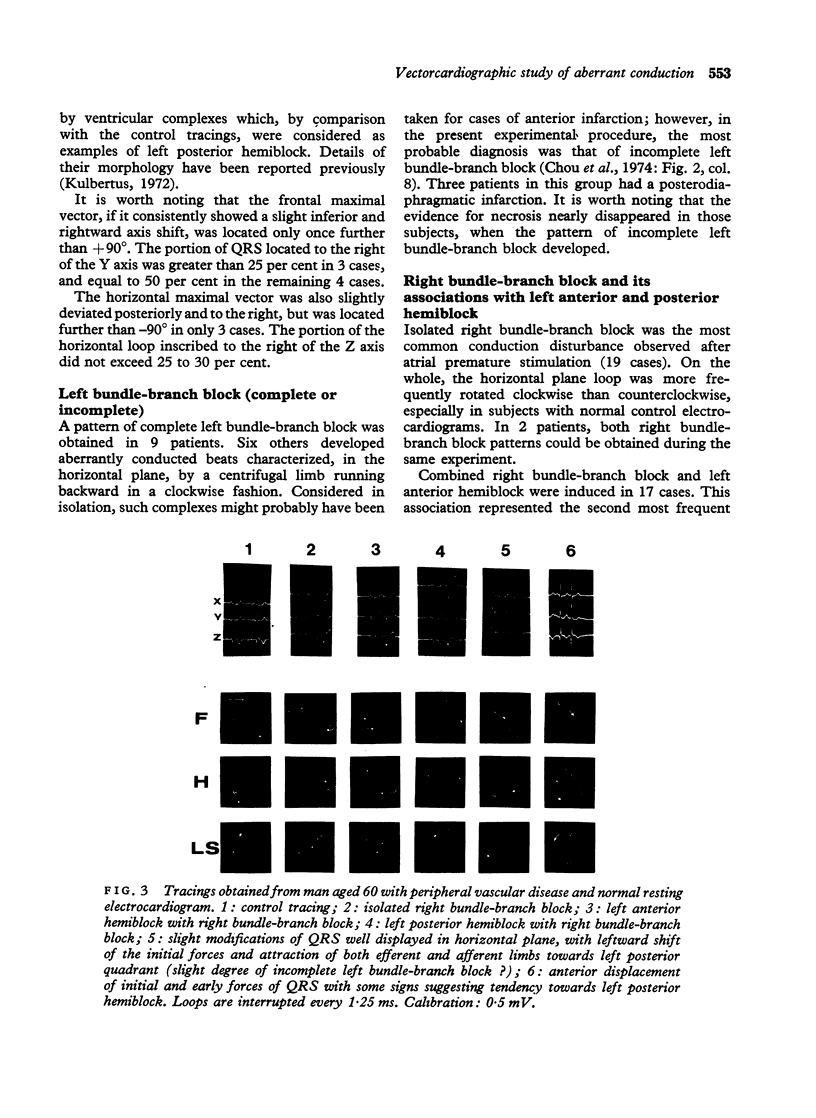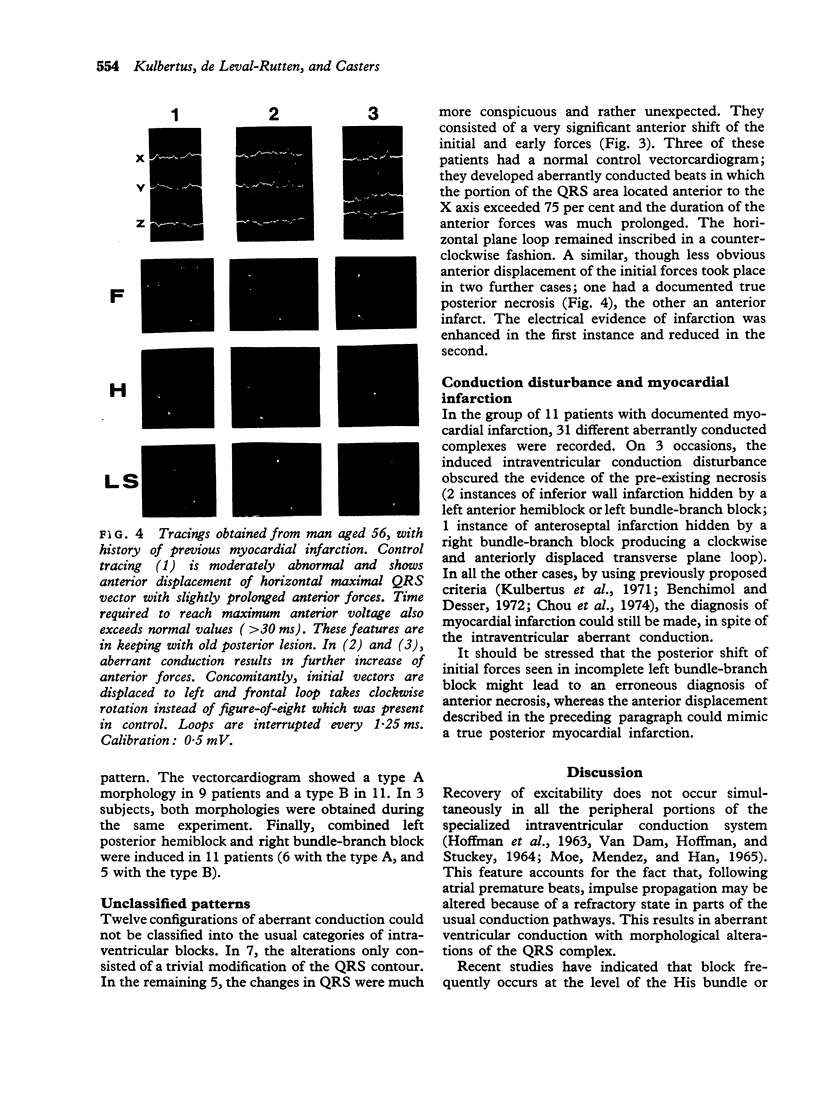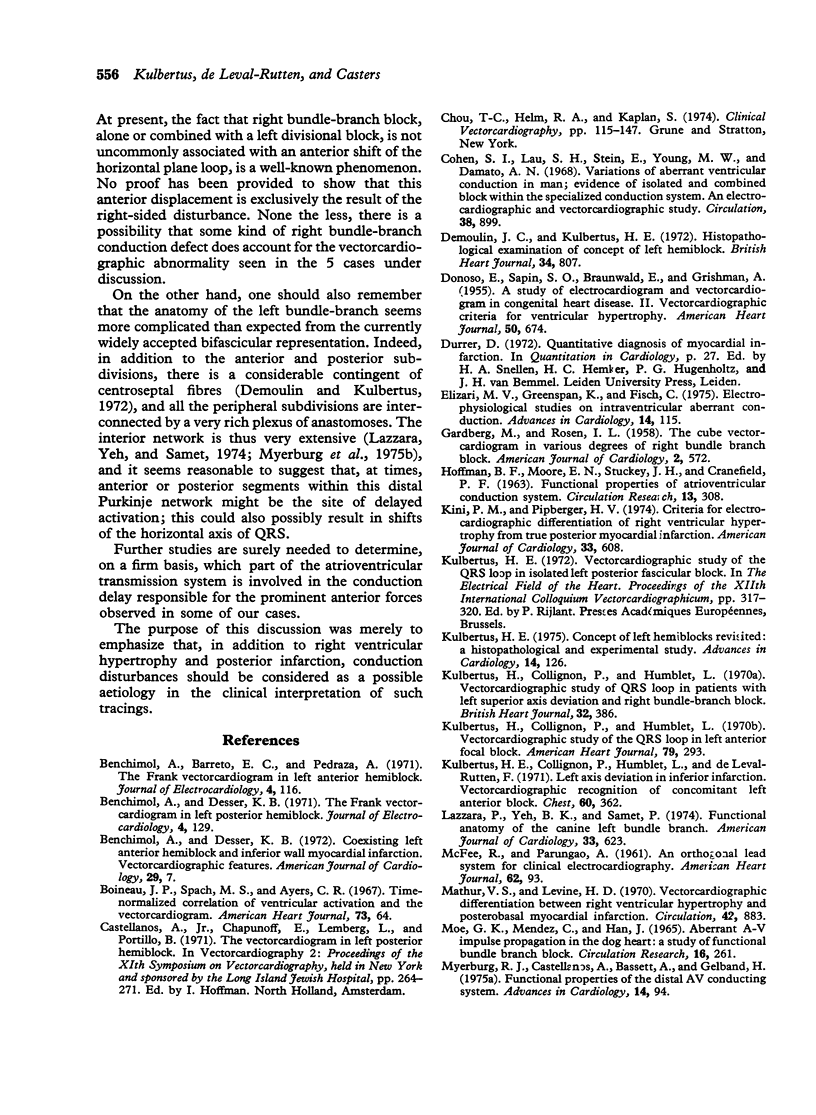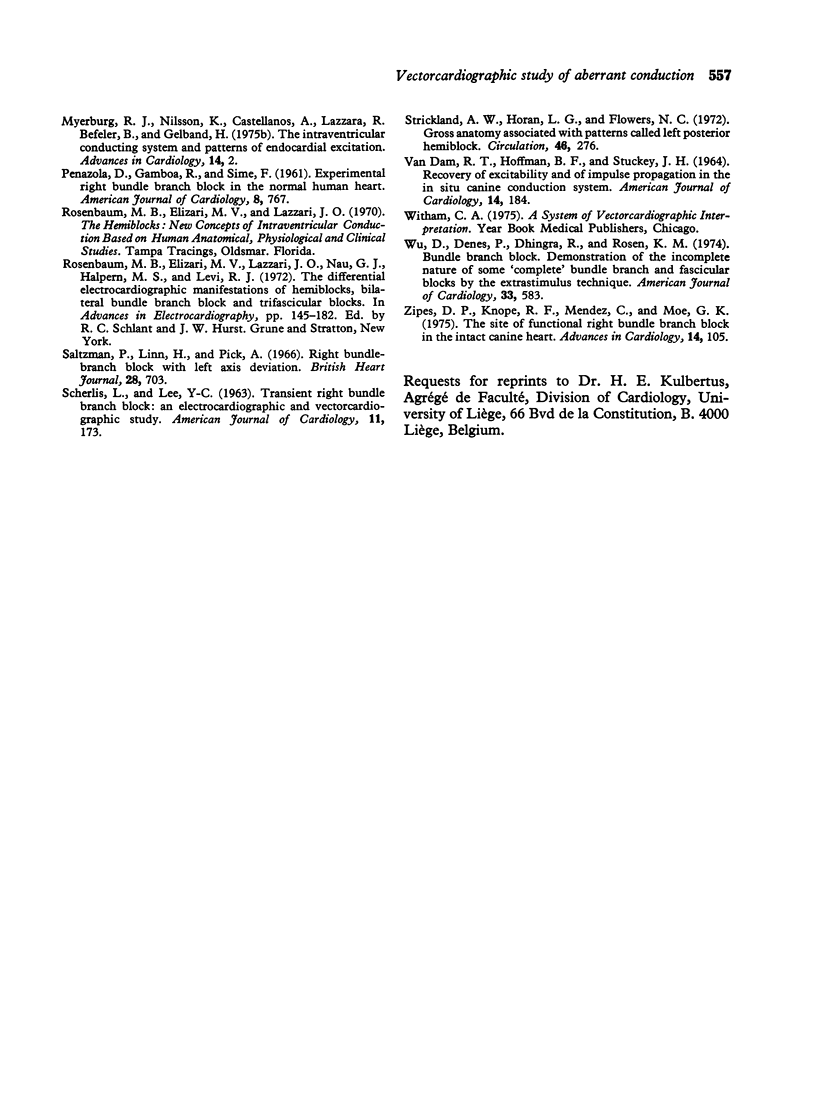Abstract
Aberrant ventricular conduction was induced in 44 subjects by introduction of atrial premature beats through a transvenous catheter-electrode. Multiple patterns of aberrant ventricular conduction were obtained in 32 patients and, in the whole group, 116 different configurations were recorded. Of these, 104 showed a classical pattern of mono- or biventricular conduction disturbance. The pattern frequencies were as follows: right bundle-branch block, 28; left anterior hemiblock combined with right bundle-branch block, 21; left anterior hemiblock, 17; left posterior hemiblock combined with right bundle-branch block, 12; left posterior hemiblock, 10; complete left bundle-branch block, 10; and incomplete left bundle-branch block, 6. The remaining 12 configurations could not be classified into the usual categories of intraventricular blocks. In 7 of them, the alterations only consisted of trivial modifications of the QRS contour. In the other 5 instances, aberrant conduction manifested itself by a conspicuous anterior displacement of the QRS loop, with increased duration of anterior forces. The latter observation is worthy of notice, as it indicates that, in the differential diagnosis of the vectorcardiographic pattern characterized by prominent anterior forces, conduction disturbances should be considered a possible aetiological factor in addition to right ventricular hypertrophy, and true posterior wall myocardial infarction.
Full text
PDF